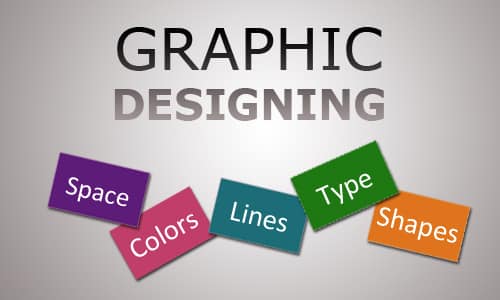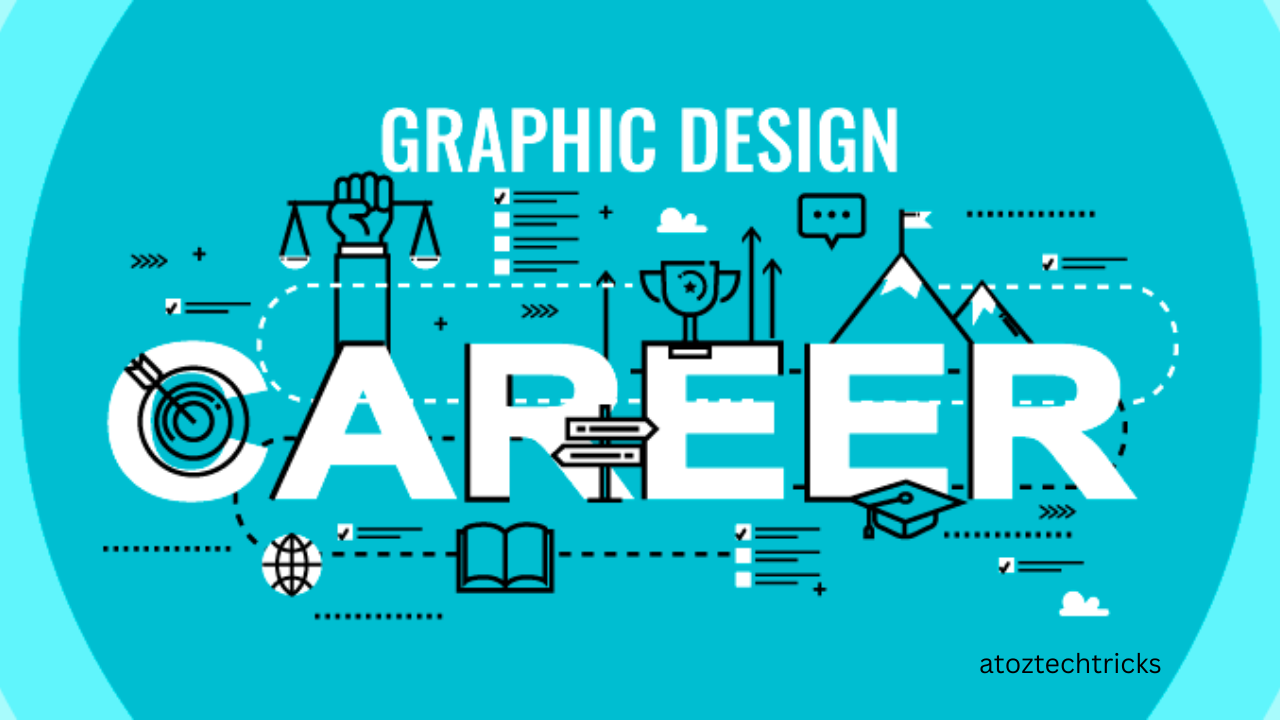Exploring Graphic Design Careers: Opportunities, Skills, and Future Prospects
Graphic design is an ever-evolving field that blends creativity with technology to communicate ideas visually. From branding to digital media, graphic designers are the creative minds behind the visual content that shapes our world. As technology advances and industries become increasingly digitized, the demand for skilled graphic designers continues to grow. This article explores the various careers within graphic design, the skills required, and the prospects of this dynamic profession.
Introduction to Graphic Design
Graphic design is the art and practice of planning and projecting ideas and experiences with visual and textual content. This can include designing logos, websites, advertisements, and even product packaging. The goal of graphic design is to create visual content that resonates with the target audience, communicates a message, and enhances the overall user experience.
The Importance of Graphic Design in Modern Business
In today’s digital age, graphic design plays a crucial role in business success. A well-designed brand identity can set a company apart from its competitors, while effective visual communication can drive marketing campaigns and enhance customer engagement. Graphic design is not just about aesthetics; it’s about problem-solving and creating visual solutions that help businesses achieve their goals.
Evolution of Graphic Design
Graphic design has evolved significantly over the years. From traditional print media to digital platforms, the tools and techniques used by graphic designers have changed, but the core principles remain the same. Understanding the history and evolution of graphic design can provide valuable insights into the current trends and future direction of the industry.
Different Career Paths in Graphic Design
Graphic design offers a wide range of career opportunities, each with its own set of responsibilities and required skills. Here are some of the most popular career paths within the field of graphic design:
1. Brand Identity Designer
Brand identity designers specialize in creating the visual elements that represent a company’s brand. This includes designing logos, colour schemes, typography, and other branding materials. Brand identity designers work closely with marketing teams to ensure that the visual identity aligns with the company’s values and resonates with its target audience.
Key Responsibilities:
- Designing logos and other branding elements.
- Developing brand guidelines.
- Collaborating with marketing teams to create cohesive branding strategies.
Required Skills:
- Strong understanding of branding principles.
- Proficiency in graphic design software such as Adobe Illustrator and Photoshop.
- Creative thinking and attention to detail.
2. Web Designer
Web designers are responsible for designing the layout, visual appearance, and usability of websites. They work closely with web developers to ensure that the design is implemented correctly and functions smoothly across different devices and browsers. Web designers need to have a good understanding of user experience (UX) and user interface (UI) design principles.
Key Responsibilities:
- Designing website layouts and interfaces.
- Creating wireframes and prototypes.
- Collaborating with web developers to implement designs.
Required Skills:
- Proficiency in web design tools such as Adobe XD, Figma, or Sketch.
- Knowledge of HTML, CSS, and JavaScript.
- Strong understanding of UX/UI design principles.
3. Digital Designer
Digital designers create visual content for digital platforms, including social media, online advertisements, and email campaigns. They need to be versatile and adaptable, as digital design often requires working with different formats and platforms. Digital designers must stay up-to-date with the latest trends in digital marketing and design.
Key Responsibilities:
- Creating visual content for digital platforms.
- Designing online advertisements and social media posts.
- Collaborating with marketing teams to develop digital campaigns.
Required Skills:
- Proficiency in digital design tools such as Adobe Photoshop and After Effects.
- Knowledge of digital marketing trends and best practices.
- Ability to work with various digital formats and platforms.
4. UI/UX Designer
UI (User Interface) and UX (User Experience) designers focus on creating intuitive and user-friendly interfaces for websites, apps, and other digital products. UI/UX designers must understand the user’s needs and behaviours to create designs that provide a seamless and enjoyable experience.
Key Responsibilities:
- Conducting user research and testing.
- Designing wireframes, prototypes, and user interfaces.
- Collaborating with developers to ensure the design is implemented correctly.
Required Skills:
- Proficiency in UI/UX design tools such as Figma, Sketch, or Adobe XD.
- Strong understanding of user-centered design principles.
- Ability to conduct user research and analyze user feedback.
5. Motion Graphics Designer
Motion graphics designers specialize in creating animated visuals for various media, including film, television, online videos, and advertisements. Motion graphics combine graphic design with animation to bring static designs to life. This role requires a strong understanding of animation principles and proficiency in animation software.
Key Responsibilities:
- Creating animated graphics for various media.
- Designing and animating title sequences, lower thirds, and other on-screen graphics.
- Collaborating with video editors and producers to create cohesive visual content.
Required Skills:
- Proficiency in animation software such as Adobe After Effects and Cinema 4D.
- Understanding of animation principles and timing.
- Creative storytelling and visual communication skills.

6. Illustrator
Illustrators create original artwork for various purposes, including books, magazines, advertisements, and product packaging. Unlike graphic designers who work with existing images and elements, illustrators often create artwork from scratch. This role requires strong drawing and painting skills, as well as the ability to adapt to different styles and mediums.
Key Responsibilities:
- Creating original illustrations for various media.
- Collaborating with clients to develop concepts and ideas.
- Adapting illustrations to different styles and formats.
Required Skills:
- Strong drawing and painting skills.
- Proficiency in illustration software such as Adobe Illustrator or Procreate.
- Ability to work in different styles and mediums.
7. Art Director
Art directors oversee the visual aspects of a project, from concept to completion. They work with a team of designers, photographers, and other creatives to ensure that the final product aligns with the client’s vision and goals. Art directors need to have strong leadership and communication skills, as well as a deep understanding of design principles.
Key Responsibilities:
- Leading a team of designers and creatives.
- Developing visual concepts and strategies.
- Ensuring that the final product meets the client’s vision and goals.
Required Skills:
- Strong leadership and communication skills.
- Deep understanding of design principles and aesthetics.
- Ability to manage multiple projects and meet deadlines.
8. Packaging Designer
Packaging designers specialize in creating the visual and structural design of product packaging. They work closely with product designers and marketers to create packaging that is not only visually appealing but also functional and sustainable. Packaging designers need to have a strong understanding of materials, printing processes, and consumer behaviour.
Key Responsibilities:
- Designing the visual and structural elements of product packaging.
- Collaborating with product designers and marketers to develop packaging concepts.
- Ensuring that the packaging is functional, sustainable, and aligns with the brand’s identity.
Required Skills:
- Proficiency in design software such as Adobe Illustrator and 3D modelling tools.
- Understanding of materials, printing processes, and packaging regulations.
- Creative problem-solving and attention to detail.
Skills Required for a Successful Career in Graphic Design
A career in graphic design requires a blend of technical skills, creative thinking, and a strong understanding of design principles. Here are some of the key skills that aspiring graphic designers should develop:
1. Creativity and Innovation
Creativity is at the heart of graphic design. Designers need to be able to think outside the box and come up with innovative solutions to visual problems. Whether it’s designing a logo or creating a website layout, creativity is essential for producing original and engaging designs.
2. Proficiency in Design Software
Graphic designers must be proficient in design software such as Adobe Creative Suite (Photoshop, Illustrator, InDesign), Figma, and Sketch. These tools are essential for creating and editing visual content. Staying up-to-date with the latest software and tools is crucial for staying competitive in the industry.
3. Understanding of Design Principles
A strong understanding of design principles, such as colour theory, typography, layout, and composition, is essential for creating visually appealing designs. Graphic designers must know how to apply these principles to create balanced and harmonious designs that effectively communicate a message.
4. Attention to Detail
Attention to detail is crucial in graphic design. Whether it’s aligning text, choosing the right colour palette, or ensuring consistency across different design elements, designers need to have a keen eye for detail to create polished and professional designs.
5. Communication Skills
Graphic designers often work closely with clients, marketing teams, and other creatives. Strong communication skills are essential for understanding client needs, presenting ideas, and collaborating effectively with others. Designers must be able to articulate their ideas clearly and receive feedback constructively.
6. Time Management and Organization
Graphic design projects often involve tight deadlines and multiple tasks. Effective time management and organizational skills are essential for managing workload, meeting deadlines, and delivering high-quality work. Designers need to be able to prioritize tasks and manage their time efficiently.
7. Adaptability and Flexibility
The field of graphic design is constantly evolving, with new trends, tools, and technologies emerging regularly. Designers need to be adaptable and flexible, willing to learn new skills and adapt to changing industry demands. Being open to feedback and continuously improving one’s skills is key to success in this dynamic field.
8. Problem-Solving Skills
Graphic design is often about solving visual problems. Whether it’s finding the best way to communicate a message or creating a design that works across different platforms, problem-solving skills are essential. Designers need to be able to think critically and come up with creative solutions to design challenges.

Education and Training for Graphic Designers
While some graphic designers are self-taught, many pursue formal education and training to develop their skills and knowledge. Here are some of the common educational paths for aspiring graphic designers:
1. Bachelor’s Degree in Graphic Design
A bachelor’s degree in graphic design is one of the most common educational paths for aspiring designers. These programs typically cover a wide range of topics, including design principles, typography, digital media, and branding. Students also gain hands-on experience through projects and internships.
2. Associate Degree in Graphic Design
An associate degree in graphic design is a shorter program that provides a foundational education in design. These programs are often more affordable and can be a good option for those looking to enter the workforce quickly. Graduates of associate degree programs can pursue entry-level positions or continue their education with a bachelor’s degree.
3. Online Courses and Certifications
There are many online courses and certifications available for those looking to learn graphic design or improve their skills. Platforms like Coursera, Udemy, and LinkedIn Learning offer courses on various design topics, from software proficiency to specific design techniques. These courses can be a great way to gain new skills and stay up-to-date with industry trends.
4. Workshops and Bootcamps
Workshops and boot camps are intensive, short-term programs that focus on specific aspects of graphic design. These programs are often led by industry professionals and provide hands-on experience in a particular area of design. Workshops and boot camps can be a valuable way to gain practical skills and build a portfolio.
5. Portfolio Development
A strong portfolio is essential for any graphic designer. Your portfolio showcases your skills, creativity, and experience to potential employers and clients. Building a diverse portfolio with a range of projects, from branding to digital design, is crucial for standing out in the competitive job market.
Education Research Careers: Exploring Opportunities, Pathways, and Impact
The Future of Graphic Design Careers
The future of graphic design is bright, with new opportunities and challenges emerging as technology advances. Here are some of the key trends and prospects for graphic design careers:
1. The Rise of Digital and Interactive Design
As businesses increasingly shift to digital platforms, the demand for digital and interactive design is expected to grow. This includes web design, app design, and interactive media. Designers who specialize in digital and interactive design will be well-positioned for success in the coming years.
2. The Growing Importance of User Experience (UX) Design
User experience (UX) design is becoming increasingly important as businesses recognize the value of creating user-friendly products and services. UX designers who can create intuitive and enjoyable user experiences will be in high demand across various industries, from technology to healthcare.
3. Sustainability in Design
Sustainability is becoming a key consideration in graphic design, particularly in areas like packaging design and print media. Designers who can create environmentally friendly designs that reduce waste and minimize environmental impact will be highly sought after in the coming years.
4. The Impact of Artificial Intelligence (AI) and Automation
Artificial intelligence (AI) and automation are expected to have a significant impact on the graphic design industry. While some tasks, such as image editing and layout design, may become automated, AI is also opening up new possibilities for designers, such as generative design and personalized content creation. Designers who embrace AI and leverage its capabilities will have a competitive edge in the industry.
5. Remote Work and Freelancing
The rise of remote work and freelancing is changing the way graphic designers work. Many designers are choosing to work independently, offering their services to clients around the world. This trend is expected to continue, providing designers with more flexibility and opportunities to work on diverse projects.
6. The Demand for Multidisciplinary Designers
As the design industry becomes more complex, there is a growing demand for multidisciplinary designers who can work across different areas, from branding to digital media. Designers who can combine skills in graphic design, web design, animation, and UX/UI design will be highly valued in the job market.
Graphic design is a dynamic and rewarding field that offers a wide range of career opportunities. Whether you’re interested in branding, web design, or motion graphics, there’s a career path in graphic design that can match your skills and interests. As technology continues to advance and industries evolve, the demand for skilled graphic designers will only grow. By developing the right skills, staying adaptable, and continuously learning, you can build a successful and fulfilling career in graphic design.




Post Comment